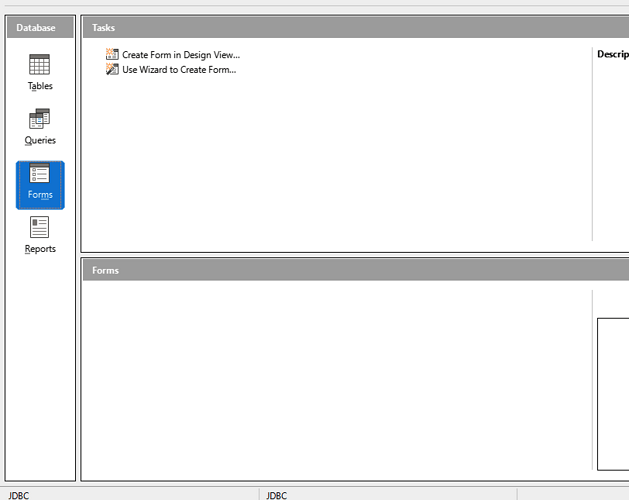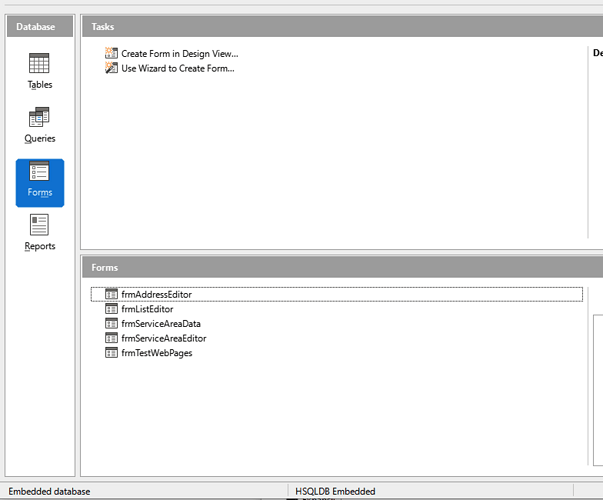Windows 10 22H2
Version: 25.2.5.2 (X86_64) / LibreOffice Community
Build ID: 03d19516eb2e1dd5d4ccd751a0d6f35f35e08022
CPU threads: 2; OS: Windows 10 X86_64 (10.0 build 19045); UI render: Skia/Raster; VCL: win
Locale: en-US (en_US); UI: en-US
Calc: threaded
I started the app I’ve been working on and got ‘General Error’. No forms were visable. Clicking on the tables got ‘The driver class “” could not be loaded.’. Back up copies run w/out errors. In Tools->Options->Advanced->Class Path I clicked the Archive button and set “\hsqldb.jar”. I set Driver Class to “org.hsqldb.jdbcDriver”. I no longer get “General Error”, but now I get “The connection to the external data source could not be established.”, so apparently this is not how I connect to the embedded database.
What do I have to do to reconnect to the embedded database & get the existing forms & tables?


